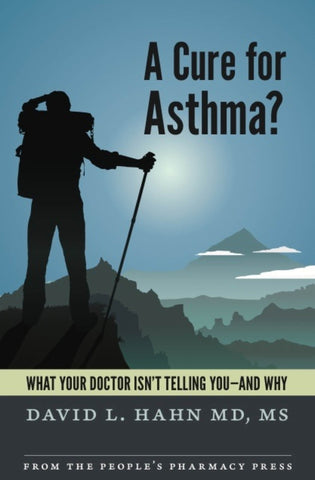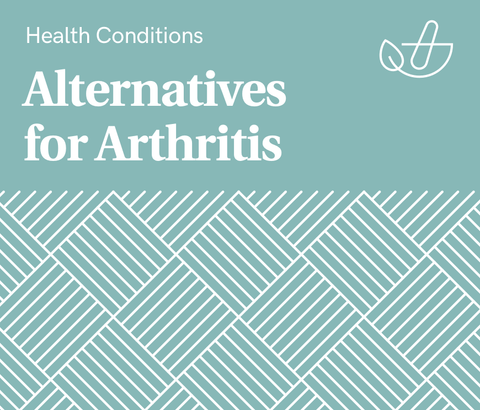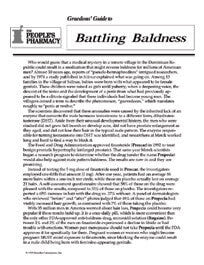Link to your individual collections by creating a new linklist in the Navigation section of the admin.
You can then have it appear here by choosing your new linklist under Customize Theme / Sidebar.

Show 1404: How You Can Avoid the Harms from Forever Chemicals
This week, an eminent toxicologist, now retired, describes the concerns about PFAS compounds, also known as forever chemicals. Although scientists have known for decades that they get into our bodies readily, the apparent benefits led to their widespread use. These are compounds that do a wonderful job keeping your boots and rain gear dry, keeping the grease from your fast food inside the package and preventing stains in carpets, upholstery and clothing. Are you still using nonstick pans? If so, there’s a chance you are ingesting some type of PFAS every time you cook. How can you avoid the harms from forever chemicals?
Avoiding the Harms from Forever Chemicals:
Per- and polyfluoroalkyl substances (PFAS) were first created in the 1930s and 1940s. Since then, they have become nearly ubiquitous. They are, of course, essential to Teflon for nonstick pans, but they are also found in kids’ school uniforms, exercise clothes, fast-food packaging of various sorts and automobiles. You’ll even find them in cosmetics like waterproof mascara, not to mention their use in fire-fighting foam for large fires. No wonder almost all of us have PFAS detectable in our bodies.
Because these are not natural compounds, we do not have good ways to remove them from our organs and blood streams. No chelating agents can pull them out. As a consequence, our best defense against the harms from forever chemicals is to avoid the products that contain them as much as possible.
Can You Take Forever Chemicals Out of Your Drinking Water?
Much of our drinking water contains PFAS. If you are on a municipal water system, you may get an annual report to tell you which ones have been detected and at what levels. Home purifiers can help, though. Water filters with granulated charcoal can remove most of the forever chemicals. Even better, water filters using reverse osmosis remove virtually all of them. To continue getting these benefits, we do have to change the filters on the recommended schedule. What’s more, we should be treating these used filters as hazardous waste rather than simply chucking them in the trash bound for the landfill.
Other Sources of PFAS:
If upholstery, carpets, clothing and shoes are made with PFAS–as so many are–it is inevitable that dust in the home or the office will be loaded with some of these forever chemicals. There are, after all, an estimated 12,000 to 16,000 different compounds with at least 200 use categories. No wonder they are so hard to escape. To minimize ingestion, wash your hands carefully after cleaning and before eating. And don’t leave food sitting out. The likelihood of dust getting on it or into it and contaminating it increases with time.
That’s indoors. Three states have recently asked the US Environmental Protection Agency to add four specific compounds in the PFAS category to the list of Hazardous Air Pollutants. That would also governmental regulation to minimize their emission.
What Are the Health Harms from Forever Chemicals?
PFAS don’t usually seem to cause acute problems. Instead, they are more insidious, apparently contributing as risk factors to many common chronic conditions. High levels have been linked to problems with fertility and low birth weight in both humans and domestic animals. Moreover, obesity, high cholesterol and type 2 diabetes have all been linked to PFAS by numerous studies. These compounds may also affect the immune system, possibly reducing its ability to fight infection. In other cases, forever chemicals appear to increase a person’s chance of developing autoimmune disease. Some experts have called for routine toxicity testing (Current Environmental Health Reports, June 2024). Tests are available for some, but not all, PFAS compounds. They are not part of routine health screening, and insurance companies may be reluctant to pay for them.
What You Can Do:
We asked Dr. Birnbaum to summarize her recommendations. She suggests:
- Filter your water (reverse osmosis is best)
- Don’t cook with nonstick pans. Check with Green Science and EWG for alternatives.
- Never use plastic to heat food in the microwaves.
- Urge our government representatives to follow the lead of the EU and ban the production and use of any PFAS that are not strictly essential. This problem is too big for us to solve it as individuals; it will take communal effort.
This Week's Guest:
Linda Birnbaum, PhD, is a toxicologist and scientist emeritus. She was director of the of the National Institute of Environmental Health Sciences and the National Toxicology Program for many years. Prior to that, she directed environmental health research at the EPA. Dr. Birnbaum served as president of the Society of Toxicology and chaired the Division of Toxicology at the American Society for Pharmacology and Experimental Therapeutics. She is a scholar in residence at Duke University.
[caption id="attachment_112522" align="alignnone" width="768"] Dr. Linda Birnbaum, scientist emeritus, former director of NIEHS[/caption]
Dr. Linda Birnbaum, scientist emeritus, former director of NIEHS[/caption]




